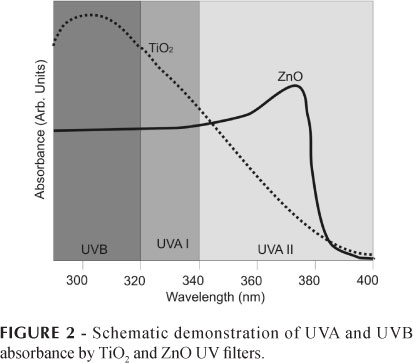Nowadays, concern over skin cancer has been growing more and more, especially in tropical countries where the incidence of UVA/B radiation is higher. The correct use of sunscreen is the most efficient way to prevent the development of this disease. The ingredients of sunscreen can be organic and/or inorganic sun filters. Inorganic filters present some advantages over organic filters, such as photostability, non-irritability and broad spectrum protection. Nevertheless, inorganic filters have a whitening effect in sunscreen formulations owing to the high refractive index, decreasing their esthetic appeal. Many techniques have been developed to overcome this problem and among them, the use of nanotechnology stands out. The estimated amount of nanomaterial in use must increase from 2000 tons in 2004 to a projected 58000 tons in 2020. In this context, this article aims to analyze critically both the different features of the production of inorganic filters (synthesis routes proposed in recent years) and the permeability, the safety and other characteristics of the new generation of inorganic filters.
Skin cancer; Sunscreen; Inorganic UV filter


